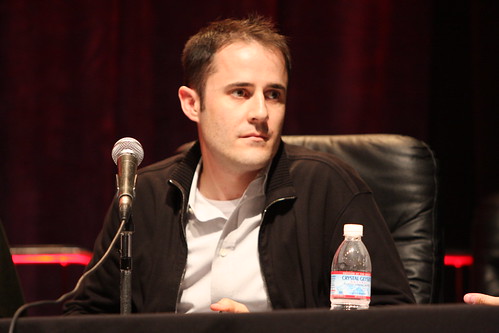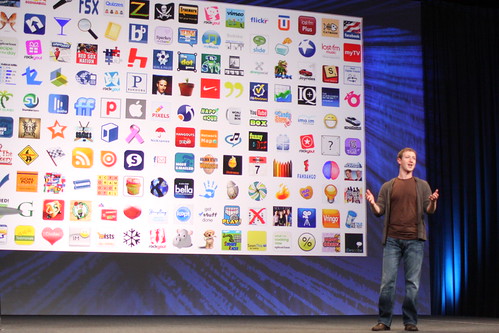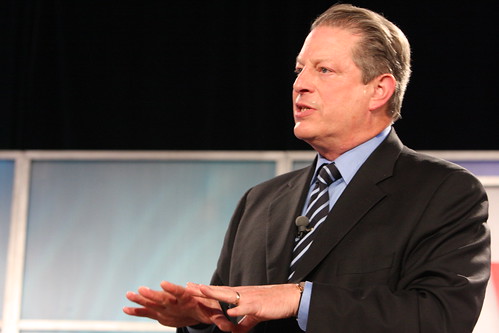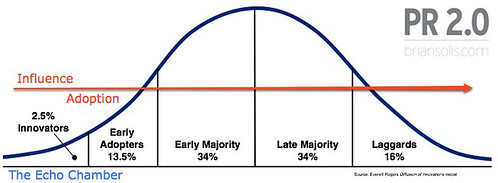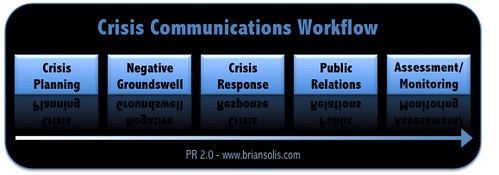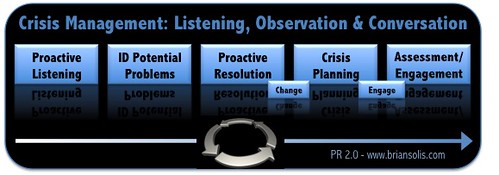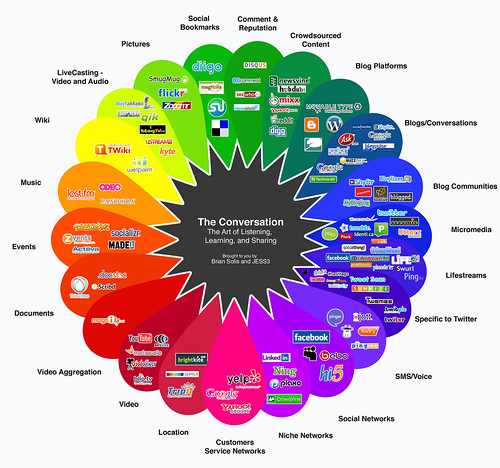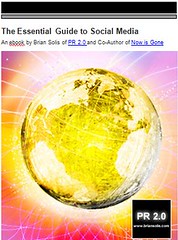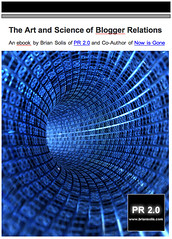Introducing MicroPR, A PR Resource for Journalists, Analysts and Bloggers on Twitter

In the era of the Social Web, transparency, engagement, and a commitment to authentically connect people to your story are essential principles for practicing successful and meaningful Public Relations.
Concurrently, the socialization of media is creating new communities and communications channels that are empowering journalists, bloggers, analysts, as well as everyday people, to actively and passionately contribute, share, and discover the stories around us. It's changing the information ecosystem.
Media and communications professionals must stay connected and work together now more than ever to compete against the amplifying volume and frequency of information.
Stowe Boyd and I, in development with Christopher Peri, are contributing to the improvement of communications and relationships between media and PR.
PR + Media + Twitter = @MicroPR
If you don't have time to read the entire post, here's a quickstart guide:
- Journalists, bloggers, and analysts, send a tweet to @micropr (www.twitter.com/micropr) with what you need help with. The PR subscribers will read it and only those who can help will respond. Always start your message with @micropr.
- PR, follow @micropr to monitor the inbound reqests from the media and to determine how you can help. This is a listening and response service for you, not a broadcast channel. Do not send a message to @micropr unless you need the assistance of the PR community.
- If you want to refer to micropr on Twtter please use the hashtag, #micropr.
For those who wish to learn more about MicroPR, please continue...
---
PR
As PR professionals, we’re driven to proactively identify relevant editorial and publicity opportunities to link our respective companies to the stories currently in progress. Today, we most likely use a combination of direct editorial calendars and services such as MyEdCals.com, Profnet, HARO (HelpaReporterOut.com), Vocus, among maintaining day-to-day relations with our contacts to stay in sync.
Media
Journalists, analysts, and bloggers face constant deadlines and experience practically impossible tasks of managing expansive networks of PR representatives, experts, and spokespeople who represent particular industries.
Twitter is nothing short of phenomenal and it only continues to experience incredible growth in both traffic and users – currently at six million registered people. It has created a dedicated, vibrant community that will fundamentally change and improve the communications channel between media and PR.
@MicroPR
Introducing MicroPR (@micropr on twitter) a new, free service on Twitter that advocates the shift from Public Relations’ traditional broadcast pitch methodology to one of listening and individual response.
Through Twitter, MicroPR connects journalists and bloggers to qualified, targeted PR professionals who can help you with the stories you’re currently writing.
How MicroPR Works

MicroPR is an automated, solution designed for simplicity.
For Bloggers, journalists, analysts, when you need help with a story:
1. Send a public message on twitter to @MicroPR.
2. Your tweet will automatically retweet from the MicroPR account to the PR and communications professionals monitoring the stream or the feed.
3. A knowledgeable PR person following the #MicroPR feed will see your individual request and respond directly via your preferred channel.
Basically, you’re inviting the community to help crowdsource elements of your story to streamline the process of story development, reducing research time and improving its quality and accuracy.
Tip: try to keep your request under 140 characters as the Twitter community may also retweet your request through their personal accounts.
Tip #2: Share @micropr with your entire editorial department and community. The process will only improve the more you use it.
For Public Relations Professionals, either follow MicroPR or subscribe to the RSS feed on Twitter. You can also run active searches for “@MicroPR” on Search.Twitter.com or TweetScan.
Examples for Journalist, Bloggers, Analysts:
- Writers looking for help with on story development can send a tweet, “@micropr Need startup recommendations for story on new micromedia tools. Reply via public tweet to @reportername” (112 characters).
- Journalists, analysts and bloggers can share that they do or do not want to be pitched via Twitter and other micromedia tools. They can also announce their specific preferences for contact.
- They could declare what sorts of microPR they want (or don't want) to receive, and in what mode -- @public messages or direct/private.
- A writer can share relevant beats @micropr beats = #social #web #networks #automotive #environment #politics.
- Conference and awards organizers can call for speakers or submissions.
- Media can also block certain PR people who are doing it wrong.
- Other services could include scheduling calls and or meetings, etc.
Examples for PR and Marketing Professionals:
- This is mostly a tool for media to reach out to you, so please don’t abuse the @micropr channel.
- If you’re looking for strategic partners or information from the PR community, feel free to send a tweet to @micropr.
- Do not use MicroPR to proactively pitch media on Twitter. Stowe Boyd and I will be introducing TwitPitch shortly.
Tip: if you want to talk about MicroPR on Twitter and don’t wish for it to appear in the stream, use the Hash Tag, #MicroPR. For example, “I really love #MicroPR because it helps me build new relationships.”
M1cr0PR.com - A Wiki to Support the Refinement of @MicroPR
First, bookmark www.m1cr0pr.com.
M1cr0PR.com is a central resource for communications professionals to learn more about the principles, methodologies, and tools to enhance your relationships through brevity, fidelity, and clarity.
It is a community-powered wiki that features:
- A list of journalists, bloggers, and analysts on Twitter and their Twitter IDs
- A directory of Micromedia Tools for PR
- Links to helpful discussions on improving PR
- In the future, we’ll also feature an FAQ page (feel free to start one)
A Draft List of Media Currently on Twitter v2.0
Hopefully, this list triggered a Google Alert. This is your invitation to use @micropr to help you source information from the PR community without getting inundated with irrelevant pitches and responses.
Please note that this list is in the process of being updated and corrected over at www.m1cr0pr.com.
Adam Boulton, Sky News UK,
Allen Stern, CenterNetworks
Amanda Congdon, AmandaCongdon.com
Ana Marie Cox, Time.com
Anthony Ha, VentureBeat
Arthur Germain , Brand Telling
Bicyclemark, Citizen Reporter
Brent Terrazas, Brentter.com
Brian Morrissey, Adweek
C Kirkham, Times-Picayune
Carlo Longino, MobHappy
Caroline McCarthy, News.com
Chris Shipley
Chris Ziegler, Engadget
D Sarno, L.A. Times
Dan Farber, CNET
Dan Kaplan, VentureBeat
Dan Thomas, WSJ
Daniel Terdiman, Cnet
Darren Waters, BBC News
Dave Slusher, Evil Genius Chronicles
Dave Winer, Media Hacker
David Griner, Luckie.com
David Kirkpatric, Fortune
David Lidsky, Fast Company
David Wescott, Its Not A Lecture Blog
Dawn Foster, Fast Wonder
Dean Takahashi, Venture Beat
Doc Searls,
Dwight Silverman, Houston Chronicle
Dwight Silverman, Houston Chronicle
Dylan Tweeny, Wired.com
Elisabeth Lewin, PodcastingNews
Eric Schonfeld, TechCrunch
Eric Zeman, PhoneScoop
Etan Horowitz, Orlando Sentinel
Ginny Skal, NBC 17 Raleigh
Graeme Thickins, Tech~Surf~Blog
Harry McCracken, Technologizer
Heather Green, BusinessWeek
Henry Blodget, Silicon Alley Insider
Houston Chronicle, Houston Chronicle
Hugh MacLeod, Gaping Void
Jacqui Cheng, Ars Technica
Jason Calacanis, Mahalo
Jeff Pulver, Pulver Blog
Jemima Kiss, JemimaKiss.com + The Gaurdian
Jim Long, NBC
Jim Louderback, Revision3
Joel Johnson, BoingBoing
John Dickerson, Slate
John Dvorak, Dvorak Blog
John Markoff, NYT Bits Blog
John Paczkowski, AllThingsD
Jonathan Fingas, Electronista
Justin Beck, SF Chronicle
Justine Ezerik, Tasty Blog Snack
Kara Andrade, Maynard Institute
Kara Swisher, AllThingsD.com
Katie Fehrenbacher, Earth 2 Tech
Kevin Allison, Financial Times
Kristen Nicole, VentureBeat
Laura Lorek, My San Antonio Blog
Leo Laporte, Leoville.com
Lisa Picarille, Revenue Magazine
Liz Gannes, GigaOm
Loren Steffy, HoustonChronicle
Louis Gray, LouisGray.com
Marc Canter,
Mark Glaser, PBS
Mark Hopkins, Mashable
Mark Krynsky, Lifestream Blog
Marshall Kirkpatrick, Read Write Web
Mathew Ingram, MathewIngramBlog
Matt Buchanan, Gizmodo
MG Siegler, Paris Lemon + VentureBeat
Michael Banovsky, Banovsky Blog
Michael Singer, InformationWeek
Mike Arrington, TechCrunch
Mike Butcher, TechCrunch UK
Mike Cassidy, SJ MercNews
Molly Wood, CNET
Natali del Conte, CNET
Om Malik, GigaOM
Owen Thomas, Valleywag
Pete Cashmore, Mashable
Peter Ha, CrunchGear
Peter Rojas, Engadget
Rafe Needleman, Webware
Richard MacManus, ReadWriteWeb
Robert Hof, BusinessWeek
Robert Scoble, Fast Company
Robert W. Anderson, Expert Texture
Ryan Block
Saleem Kahn, tech journalist
Sam Whitmore, Media Survey
Sarah Lacy, BusinessWeek
Sarah Perez, Read Write Web
Saul Hansell, NY Times
Steve Baker, BusinessWeek
Steve Gillmor,
Steve Spaulding, How to Split an Atom
Stewart Alsop, StewartAlsop.com
Stowe Boyd, /Message
Tannette Elie, Milwaukee Journal
The Guy Report, ESPN &Playboy
Tod Maffin, CBC
Tom Foremski, Silicon Valley Watcher
Tom Merritt, CNET
Tricia Dureyee, MoCoNews
Veronica Belmont, Revision3
Walt Mossberg, AllThingsD/WJS
Wayne Sutton, NBC 17 Raleigh
Warning to PR: Only contact reporters and bloggers using their preferred methods and channels. Do not send spam. Doing so will not only get you blacklisted, but will also get you blocked on Twitter.
Stowe says it best, "On Twitter, I will simply block people that abuse my willingness to have an open dialog about products with PR folks, or basically anyone else, for that matter."
---
Special thanks to Brad Mays and Evan Solomon for their priceless participation and advice.
---
MicroPR on Twitter by Brian Solis
---
Connect with me on:
Twitter, FriendFeed, LinkedIn, Tumblr, Pownce, Plaxo, Plurk, Identi.ca, BackType, Jaiku, Social Median, or Facebook
---
Subscribe to the PR 2.0 RSS feed.
pr pr2.0 pr+2.0 micropr twitter micro media community social+network social+media socialmedia social public relations guru blogger expert journalist brian+solis stowe+boyd analyst media2.0 media+2.0 publicity communications marketing

